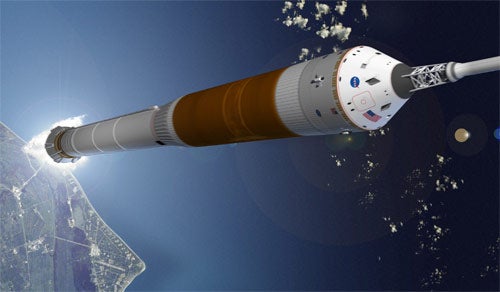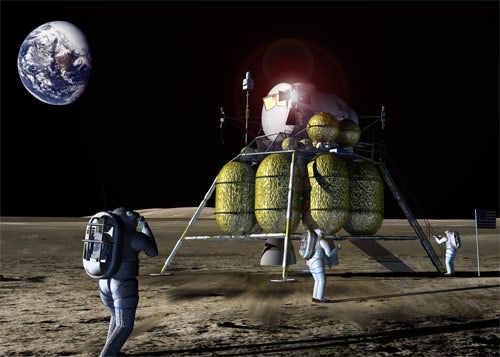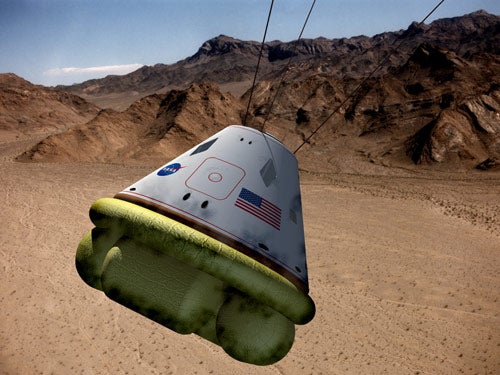Today, NASA Administrator Mike Griffin revealed the space shuttle’s successor. Looking at the architecture, the spacecraft is reminiscent of Apollo mission spacecraft. However, this is not your father’s Apollo module.
The Crew Exploration Vehicle is larger than its lunar-landing predecessor — Griffin deemed it “Apollo on steroids.” It will be able to take four astronauts to the lunar surface and increase the time they spend there.
The launch design places the capsule atop a single shuttle solid-rocket booster, with a second stage powered by a shuttle main engine. After reaching orbit, the capsule will join with the lunar lander and Earth-orbit departure stage, which launched aboard a separate rocket. The spacecraft will head toward the Moon, and 3 days later, reach lunar orbit. The four astronauts will leave the capsule and travel to the surface in the lander. When it comes time to return, the crew will blast off from the lander and rendezvous with the capsule and head back to Earth.
The next-generation spacecraft is reusable — for up to 10 missions. Griffin plans on a minimum of two flights per year. Upon return, the capsule will be able to land on ground or water.
While the Apollo missions were restricted to the Moon’s equator for landing, this lander can touchdown at almost any safe zone on the lunar surface. NASA has consulted with lunar scientists to select a landing site of particular research interest.
This design allows NASA to achieve Bush’s goals in the most cost-effective manner and within the time constraints. The shuttle fleet will be retired in 2010. This new spacecraft is tentatively scheduled to fly in 2012, which could be pushed back to 2014. The mission to the Moon will launch in 2018. Bush’s initiative called for a lunar visit by 2020. Griffin stated it is too early to predict a timetable on reaching Mars.
The spacecraft will take over servicing missions to complete the International Space Station (ISS). Griffin, a fan of relinquishing some of NASA roles to the private sector, believes the spacecraft could “stand down” should a commercial enterprise arise that can fulfill these ISS duties.
During today’s presentation, Griffin was adamant the spacecraft’s development won’t drain resources from other NASA projects. The administrator also emphasized this mission will operate under current budgetary measures, and he has not asked for more money for the project.












